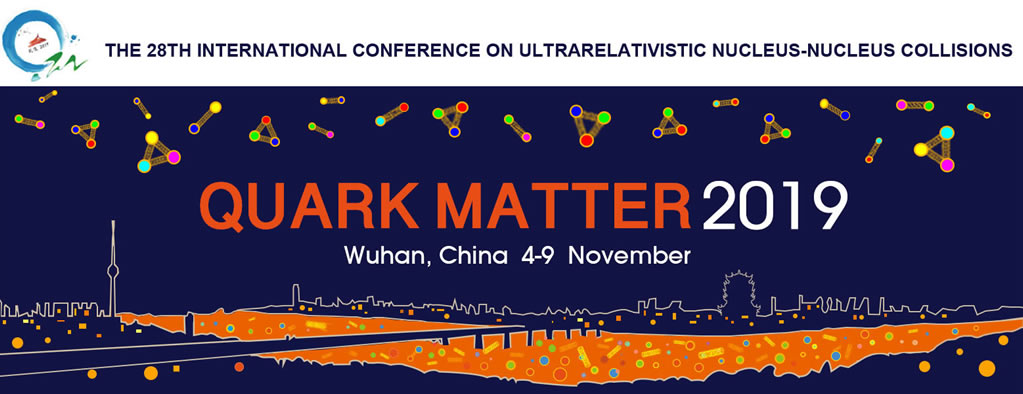Speaker
Description
Many great efforts have been made to investigate the Chiral Magnetic Effect (CME) and Chiral Magnetic Wave (CMW), which reply on the existence of extremely large electromagnetic fields in relativistic heavy-ion collisions.
However, the current main difficulty of measuring the CME signal is some backgrounds which we do not understand clearly. To isolate the influence of those backgrounds, the isobar program at RHIC has been proposed and it collides $_{44}^{96}\textrm{Ru}+_{44}^{96}\textrm{Ru}$ and $_{40}^{96}\textrm{Zr}+_{40}^{96}\textrm{Zr}$ elements, since they have a same nucleon number but the 10$\%$ difference of proton number. The CME signal is expected to be different between the two isobaric collisions. By investigating the the properties of electromagnetic fields in two isobaric collisions with special emphasis on the correlation between magnetic field direction and participant plane angle $\Psi_{2}$ (or spectator plane angle $\Psi_{2}^{SP}$), i.e. $\langle$cos2$(\Psi_B - \Psi_{2})\rangle$ [or $\langle$cos2$(\Psi_B - \Psi_{2}^{SP})\rangle$], we confirm that the magnetic fields of $_{44}^{96}\textrm{Ru}+_{44}^{96}\textrm{Ru}$ collisions are stronger than those of $_{40}^{96}\textrm{Zr}+_{40}^{96}\textrm{Zr}$ collisions. Moreover, we find that the $\textbf{deformation of nuclei has a non-negligible effect on}$ $\langle$cos2$(\Psi_B - \Psi_{2})\rangle$, especially in peripheral events. Because the magnetic field direction is more strongly correlated with $\Psi_{2}^{SP}$ than with $\Psi_{2}$, $\textbf{the relative difference of the chiral magnetic effect observable with respect to}$ $\Psi_{2}^{SP}$ $\textbf{is expected to}$ $\\$ $\textbf{be able to reflect much cleaner information about the CME with less influences of deformation}$[1].
What is more, with the presence of magnetic field, the coupling of the vector and axial currents induced by the chiral anomaly can motivate a collective gapless excitation in QGP, i.e. CMW. The CMW can lead to an electric quadrupole moment in relativistic heavy-ion collision, which explains the observed charge-dependent elliptic flow of pions. In our study, a dipolar distribution of $\bf E \cdot B$ is observed at the non-central collisions in Au+Au collisions at the RHIC energy $\sqrt{s}$=200 GeV. More importantly, we find that the coupling of the dipole QED anomaly and magnetic field $\bf B$ can also induce an electric quadrupole moment which can further lead to the difference in elliptic flows between positive charged particles and negative charged particles through final interactions. The centrality dependence of the density of $\bf E \cdot B$ is similar to the trend of the slope parameter $r$ measured from the difference in elliptic flows between positive pions and negative pions by the STAR collaboration. Therefore, $\textbf{the novel mechanism for electric quadrupole moment generation can offer a new}$ $\textbf{interpretation of the observed charge-dependent elliptic flow of pions, but without the}$ $\textbf{formation}$ $\\$ $\textbf{of CMW}$[2].
[1] X. L. Zhao, G. L. Ma and Y. G. Ma, Phys. Rev. C 99, no. 3, 034903 (2019) [arXiv:1901.04151 [hep-ph]].
[2] X. L. Zhao, G. L. Ma and Y. G. Ma, Phys. Lett. B 792, 413 (2019) [arXiv:1901.04156 [hep-ph]].
